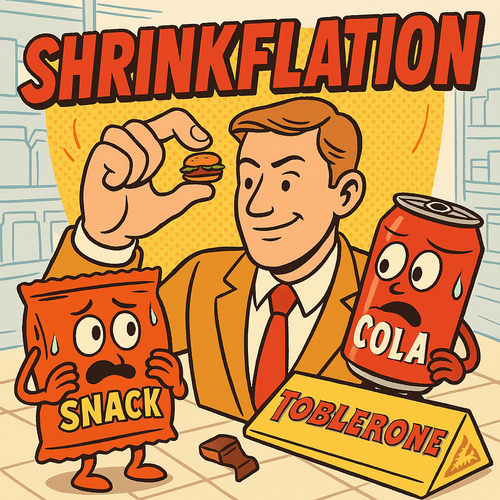When Less Is More: The Curious Case of Shrinkflation


It started with a tweet. A simple photo of a hand holding a Momogi snack—one that looked, well, smaller than remembered. “Dulu enggak segini,” someone wrote. “Sekarang jadi seupil banget.” And just like that, the internet erupted. Because everyone, it seems, had a memory of a bigger snack. And a creeping suspicion: something’s been taken away from us. But this isn’t just about Momogi. This is about Toblerone, Coca-Cola, Pringles—and dozens of others. Welcome to the world of shrinkflation.
The Illusion of Sameness Shrinkflation is a clever sleight of hand in economics.
Instead of raising prices, companies shrink the product.
A few less chips. A thinner chocolate bars. A soda can that’s just a bit slenderer. The price tags? Still the same. The profit margins? Protected. It’s what companies do when they’re cornered—faced with rising input costs and inflationary pressure, yet wary of losing consumers sensitive to price hikes.
Why It Works: The Consumer Psychology Behind It We notice price changes. We don’t always notice volume changes. In fact, our brains are wired to anchor to visual cues like packaging, not precise net weight. That’s why Pringles can keep the same iconic can—while subtly shrinking the chip inside. And most of us… won’t even blink. ONS data from the UK showed over 2,500 products shrunk between 2012 and 2017. And that’s just what got measured.
The Ethics of the Invisible Trade-Off Is this deception? Or just smart business? Toblerone widened the gap between chocolate peaks. Coca-Cola slimmed the diameter of its cans. And suddenly, one of the most common Valentine’s chocolates—had less love in it. What’s fascinating is that this tactic doesn’t spark outrage—until it hits nostalgia. Momogi wasn’t just a snack. It was a memory. And when a memory feels altered; we react not just with confusion—but with betrayal.
So, What Matters More? Quantity or Trust? Shrinkflation raises a larger question:
Do consumers care more about how much they get—or about feeling like they weren’t fooled?
In a world where every price move can trigger backlash, brands are learning to hide the inflation inside the packaging. But trust—once it shrinks—is harder to recover.
So, the next time your snack feels smaller, it might not be nostalgia playing tricks on you. It might just be economics, cleverly disguised.